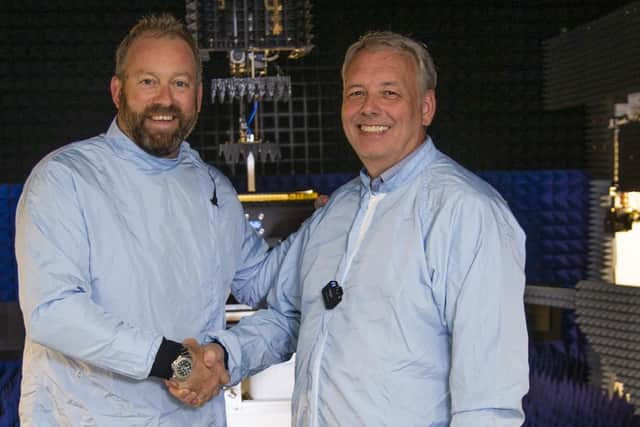World first for Leonardo Edinburgh engineers in radar test breakthrough
Leonardo engineers have created a fully automated end-to-end fighter jet radar array test facility at their site in Crewe Toll.
Engineers working at the company have created a ‘one button’ solution to achieve a 24 to 30-hour radar antenna test that has been completed and commissioned into full service earlier this year.
Advertisement
Hide AdAdvertisement
Hide AdBrian Kerse, chief engineer – antenna test at Leonardo, led the design and build of the new radar and spoke of the work that went into the breakthrough.


He said: “The purpose of this ground-breaking automated near-field range is that it literally allows us to take a freshly built radar array, fully test it and get to the point that we are ready to deliver it without any human interference.
"We shared our design concept with our supplier and asked them to build a capability that would allow us to swap between the alignment laser and different wave-guide radio frequency probes, creating the first of type technology of its kind in the world.
"We believe it is the only automatic radar antenna test solution facility that exists in industry at present.”
Mr Kerse said extensive preparations had to be carried out to ensure work was undertaken in a carefully secured, calibrated and controlled environment, as the radar transmits and receives high power radio frequency energy. He said: “It has been a real team effort and they have been instrumental in ensuring we had all the facilities in place for the anechoic chamber arriving on site.
"This was complicated by the need to remove concrete foundations dating back to World War Two, replacing them with a suspended anti-vibration floor to fit everything under the WW2 roofing structure.
"Our team completely automated the entire process, removing virtually all human intervention. In the past, it would take on average 120 hours over five to seven days to test and produce a test report for each array, with someone present all the time. This has been reduced to around 30 hours’ duration, with no need for any presence except the very beginning and end.”
Leonardo engineers regard the Production Near-Field Range (PNFR) as a game-changing step forward in manufacturing technology. It means more radar antennas can be processed over a shorter period with more consistent controlled results.
Advertisement
Hide AdAdvertisement
Hide AdMark Stead, senior vice-president of radar and advanced targeting at Leonardo, said: “It has taken our team a number of years to get this fully commissioned. They have been working flat out to achieve the world-class levels of testing that are now being processed on a daily basis here at Crewe Toll.
"We believe key aspects of the design and implementation are firsts in the industry anywhere around the world in terms of that fully automated array testing procedure. We’re excited about the different future applications of this technology.”
Comments
Want to join the conversation? Please or to comment on this article.
